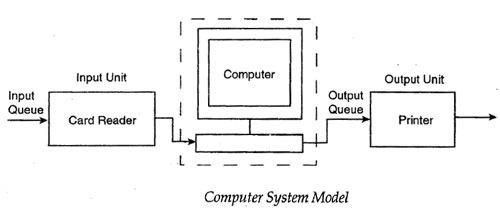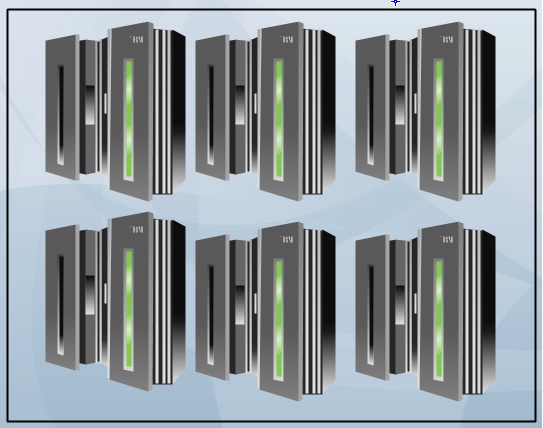The term computer networks resulted from the ‘combination of two major areas, namely computers and communications. 
It was during the 1950’s, that computers were treated as large complex machines and were operated by specially trained people. Jobs were given to computers in the form of batches. Punched cards, paper tapes, or magnetic tapes were used as input devices. There was no direct communication or interaction between the user and the computer. Users suffered with extremely long delays between the submission of jobs and the receipt of output results. The computer model resembles the one shown in Figure. Note that there are two queues, one at the input device and another at the output device.
In the 1960’s, interactive terminals were developed. Remote users can be connected to a large mainframe computer via a low speed data line. The network resembles the one shown in Figure.
When more devices are’ connected to a computer, it is not so economical to have a separate communication line from each device to the computer. To solve this problem, multiplexers and concentrators were developed. These devices collect the output from a set of peripheral devices and send it over a common communication link. Special communication processors called front-ends were developed to relieve the mainframe computers from performing all the communication functions.
Time-sharing systems were developed and that led to the development of many applications centered on a single computer. The concept of a large-scale, general-purpose network was developed. Such a network consists of a set of nodes called network switches or interface message processors (IMP) connected by means of interconnecting transmission links. Interconnecting links can be a wire, microwave radio, optical fiber, or satellite communication links. Nodes are located at geographically separated locations. Each node forwards the message passing through it to the next node in the concerned path.
 As technology advanced, inexpensive personal computers started replacing medium and large systems in many commercial and educational institutions. Local Area Networks (LAN) were developed. A LAN is capable of sharing expensive resources like laser printers, enterprise software, etc., and provides access to a large database. LANs were initially used for the purpose of connecting people. It supports high speed switching. Special software known as Network OS was developed to manage and control the access of these Local Area Networks. The users demanded access to resources outside the LAN. The most common resources were printers and large databases. These resources may be components of other LAN. Remote file transfer and remote login were then developed. The concept of Wide Area Networking (WAN) evolved by interconnecting hundreds of thousands of Local Area Networks.
As technology advanced, inexpensive personal computers started replacing medium and large systems in many commercial and educational institutions. Local Area Networks (LAN) were developed. A LAN is capable of sharing expensive resources like laser printers, enterprise software, etc., and provides access to a large database. LANs were initially used for the purpose of connecting people. It supports high speed switching. Special software known as Network OS was developed to manage and control the access of these Local Area Networks. The users demanded access to resources outside the LAN. The most common resources were printers and large databases. These resources may be components of other LAN. Remote file transfer and remote login were then developed. The concept of Wide Area Networking (WAN) evolved by interconnecting hundreds of thousands of Local Area Networks.
 Dinesh Thakur holds an B.C.A, MCDBA, MCSD certifications. Dinesh authors the hugely popular
Dinesh Thakur holds an B.C.A, MCDBA, MCSD certifications. Dinesh authors the hugely popular